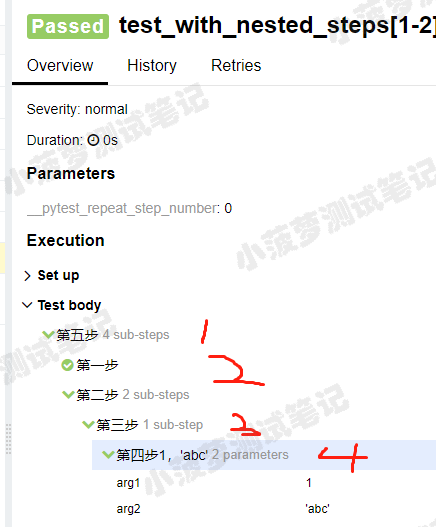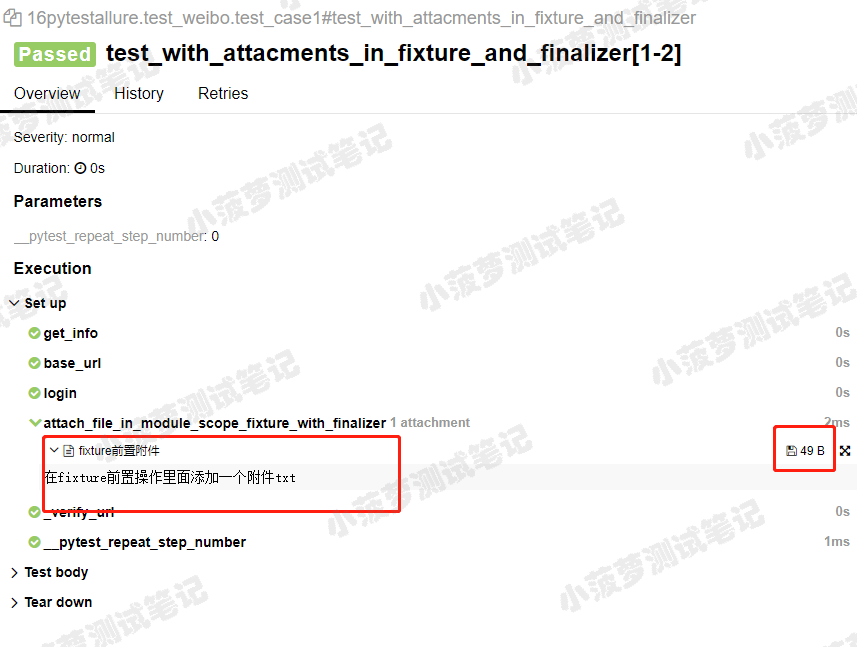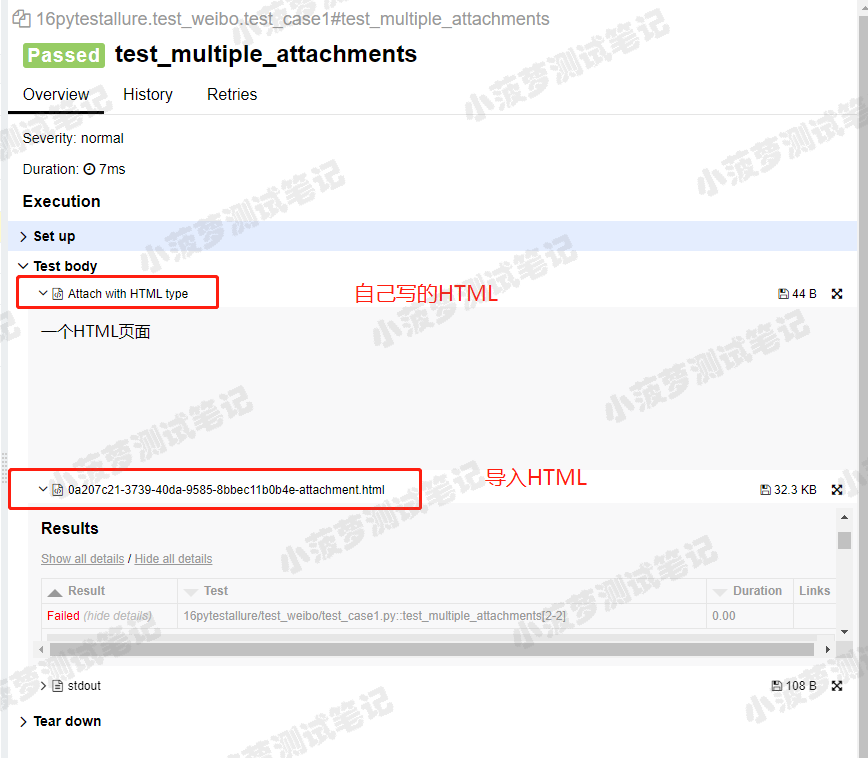 allure的特性,@allure.step()、allure.attach的详细使用
allure的特性,@allure.step()、allure.attach的详细使用
# 前言
allure除了支持pytest自带的特性之外(fixture、parametrize、xfail、skip),自己本身也有强大的特性可以在pytest中使用
# @allure.step
- allure报告最重要的一点是,它允许对每个测试用例进行非常详细的步骤说明
- 通过 @allure.step() 装饰器,可以让测试用例在allure报告中显示更详细的测试过程
# 示例代码
import allure
@allure.step("第一步")
def passing_step():
pass
@allure.step("第二步")
def step_with_nested_steps():
nested_step()
@allure.step("第三步")
def nested_step():
nested_step_with_arguments(1, 'abc')
@allure.step("第四步{0},{arg2}")
def nested_step_with_arguments(arg1, arg2):
pass
@allure.step("第五步")
def test_with_nested_steps():
passing_step()
step_with_nested_steps()
1
2
3
4
5
6
7
8
9
10
11
12
13
14
15
16
17
18
19
20
21
22
23
24
25
2
3
4
5
6
7
8
9
10
11
12
13
14
15
16
17
18
19
20
21
22
23
24
25
# 测试用例在allure上的显示

# 知识点
- step() 只有一个参数,就是title,你传什么,在allure上就显示什么
- 可以像python字符串一样,支持位置参数和关键字参数 {0},{arg2},可看第四步那里,如果函数的参数没有匹配成功就会报错哦
- step() 的使用场景,给我感觉就是,当方法之间嵌套会比较有用,否则的话只会显示一个步骤,类似下面图

# allure.attach(挺有用的)
**作用:**allure报告还支持显示许多不同类型的附件,可以补充测试结果;自己想输出啥就输出啥,挺好的
语法: allure.attach(body, name, attachment_type, extension)
# 参数列表
- body:要显示的内容(附件)
- name:附件名字
- attachment_type:附件类型,是 allure.attachment_type 里面的其中一种
- extension:附件的扩展名(比较少用)
# allure.attachment_type提供了哪些附件类型?

# 语法二: allure.attach.file(source, name, attachment_type, extension)
source:文件路径,相当于传一个文件
其他参数和上面的一致
# 其中一个测试用例的代码栗子
import allure
import pytest
@pytest.fixture
def attach_file_in_module_scope_fixture_with_finalizer(request):
allure.attach('在fixture前置操作里面添加一个附件txt', 'fixture前置附件', allure.attachment_type.TEXT)
def finalizer_module_scope_fixture():
allure.attach('在fixture后置操作里面添加一个附件txt', 'fixture后置附件',
allure.attachment_type.TEXT)
request.addfinalizer(finalizer_module_scope_fixture)
def test_with_attacments_in_fixture_and_finalizer(attach_file_in_module_scope_fixture_with_finalizer):
pass
def test_multiple_attachments():
allure.attach('<head></head><body> 一个HTML页面 </body>', 'Attach with HTML type', allure.attachment_type.HTML)
allure.attach.file('./reports.html', attachment_type=allure.attachment_type.HTML)
1
2
3
4
5
6
7
8
9
10
11
12
13
14
15
16
17
18
19
20
2
3
4
5
6
7
8
9
10
11
12
13
14
15
16
17
18
19
20
# 运行之后看结果

这是一个txt附件

这是一个用了 allure.attach() 来插入一段自己写的HTML和 allure.attach.file() 来导入一个已存在的HTML文件(pytest-html报告)
本文转自 https://www.cnblogs.com/poloyy/p/12716659.html (opens new window),如有侵权,请联系删除。
上次更新: 2022/10/15, 15:19:25
